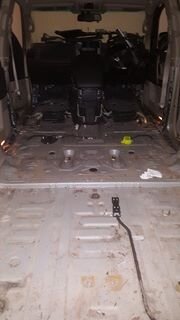- Joined
- May 26, 2014
- Messages
- 4,809
- Country Flag
Your cables should come in from underneath the left hand side of the power outlet box, there are three terminals, acc, constant live and ignition. There is a common earth terminal. They are fused 20, 10, and 10 amp.So i spent yesterday afternoon after work sticking in the usb sockets i bought last week, I'm not saying it's the tidiest install ever but i didn't feel comfortable chopping up the plastics. This way its removable.
Chopped and drilled some wood, don't have the correct tools so just drilled lots of holes for the sockets.
View attachment 114262
"face plate"View attachment 114263
Got the carpet out from making the drawers and wrapped it, bit fiddly with the small bits and i didn't have the stapler this time.View attachment 114264
you can see where i missed while squirting the glue, can't see it from the drivers side but a little messy from the passenger side.View attachment 114265
test fitting.
View attachment 114266 View attachment 114267 View attachment 114268 View attachment 114269 View attachment 114270
The new reverse lights came in handy.View attachment 114271
@StarCruiser figured out what those wires were for on the passenger side battery. There were extra ciggy sockets. One was in the nsr cubby hole and the other tucked behind the centre console. I reused the earth from that one.
View attachment 114272
Stuck in place with double sided sticky stuffView attachment 114273 View attachment 114274 View attachment 114275
close up of the messy bit of glue.View attachment 114276 View attachment 114277
I discovered i'm really crap at soldering, really really crap but it's all together and working. Wired it into that power supply thing next to the drivers side battery so that its only got power when the ignition is on.
Q. How are you supposed to actually connect stuff to that? i took the top off and connected it, but with the wire there its not exactly flush when closing, and are those contacts already fused? If not i need to stick one in line.
Soldering is easy, on thicker gauge wire you will need a higher amp iron, most cheap ones are about 25 watt, this isnt enough on the bigger stuff or even on a cold windy day, the solder wont get hot enough.









